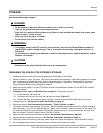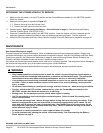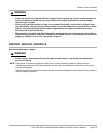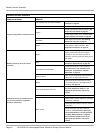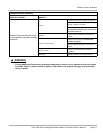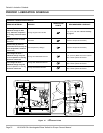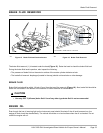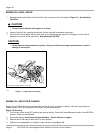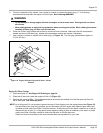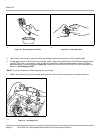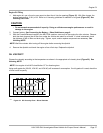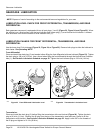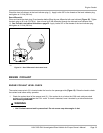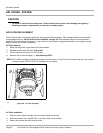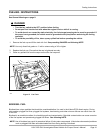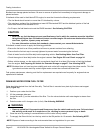
Engine Oil
5. From the underside of the vehicle, use a socket or wrench to remove the drain plug (1). Turn the plug
counterclockwise and drain the engine oil into the pan. See following WARNING.
WARNING
• Do not attempt to change engine oil when the engine is hot or even warm. Hot engine oil can cause
skin burns.
• Wear safety glasses or approved eye protection when servicing the vehicle. Wear rubber gloves when
handling oil drain plug, oil lter, and oil drain pan.
6. Clean the oil drain plug threads with solvent to remove oil and oil residue. Make sure that the compression
washer remains on the drain plug. Inspect the compression washer and replace if necessary.
7. Use a socket or wrench to replace the oil drain plug (1) (Figure 18). Turn the plug clockwise and tighten to
31 ft-lb (42 N·m).
1
2
208
Figure 18 Engine Oil Drain Plug and Oil Filter – Diesel
Vehicles
Engine Oil Filter Change
1. Drain the engine oil. See Engine Oil Draining on page 34.
2. Place the oil drain pan under the engine oil lter (2) (Figure 18).
3. Remove the engine oil lter. Turn it counterclockwise and drain the residual oil in the lter port and lter into
the oil drain pan. See following NOTE.
NOTE: An oil drip guard (1) can be used to prevent excess oil from dripping onto the engine base plate (Figure 19).
Use an empty quart (one liter) container and cut the bottom off at an angle, then slide the open area of the
container up and under the oil lter (2) before removal. Position the port of the plastic container so oil will be
directed into the oil pan (3). A drip guard can be made by folding a piece of cardboard, thin metal, or plastic
under the oil lter, forming a channel to direct the lter port oil into the drain pan.
Dispose of used oil according to the environmental laws and regulations for your area.
HUV 5420 DX
R
Homologated Diesel Vehicle for Europe Owner’s Manual Page 35



